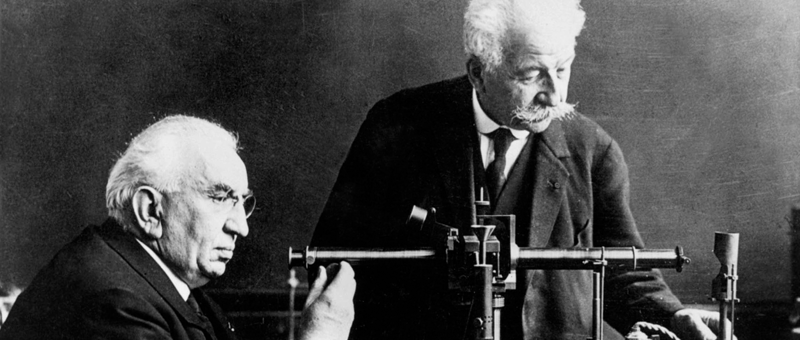
Auguste and Louis Lumière: In Focus
To mark 70 years since the death of Louis Lumiere on June 6th, 1948 we’re selecting highlights from the archive featuring the Lumiere brothers – pioneers of the moving image.
The two boys were born in the early 1860s in Besançon, France, but grew up in Lyon where much of their experimentation took place. Their father, Charles-Antoine Lumière owned a small factory with his wife, Jeanne Joséphine Costille Lumière, producing photographic plates. In spite of the long hours in which the family toiled, the factory struggled to make any substantial profit. Auguste and Louis attended one of the most technically advanced schools in France at that time and decided to attempt to invent a way of automating the plate production process, inspired by their Father’s own experiments.
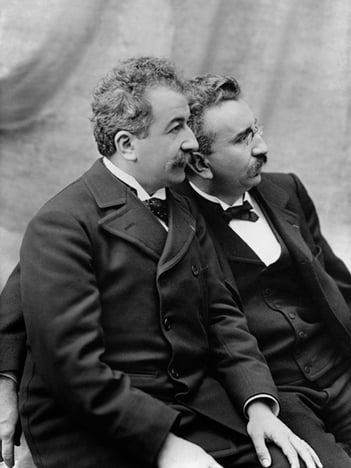
Brothers Auguste Lumiere (1862-1954) and Louis Lumiere (1864-1948) inventors of cinema / Bridgeman Images
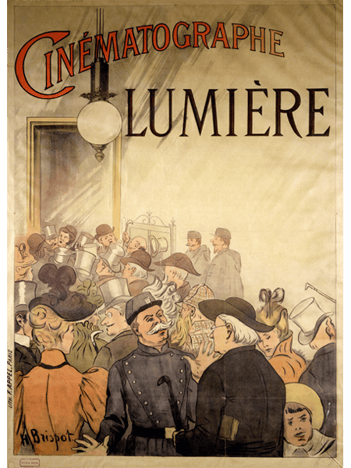
Poster advertising the ‘Cinematographe Lumiere’, 1896 (colour litho), H. Brispot (1846-1928) / Musee de la Ville de Paris, Musee Carnavalet, Paris, France / Archives Charmet / Bridgeman Images
The factory became a success with the introduction of the brothers’ new method, and began employing additional workers. The brothers’ father retired in 1892, after the factory had been a success for 8 years. The brothers then began to experiment with moving images – work which would have an immediate impact on the public’s perception of the image.
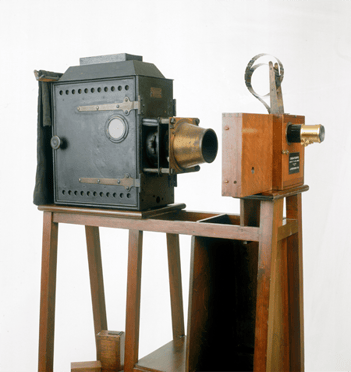
Lumiere cinematographe, 1895 (wood & metal), French School, (19th century) / National Media Museum, Bradford, West Yorkshire / Bridgeman Images
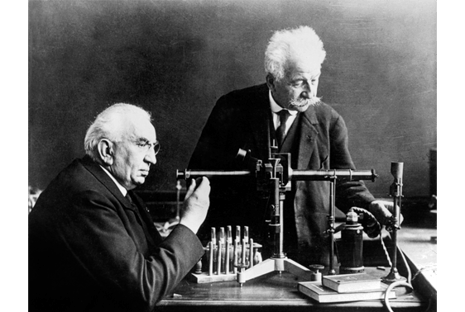
The Lumiere brothers Louis (l, 1864-1948) and Auguste (1862-1954), inventors of movie, here c. 1925 / Tallandier / Bridgeman Images
With their invention of the Cinematograph, Auguste and Louis Lumiere made history. It was the first device capable of projecting moving image onto a screen – enabling groups to watch footage together, thus sharing the experience. Prior to this, Thomas Edison had created the “peepshow” kinetoscope – which the user had to stand against and peer into to see the moving image.
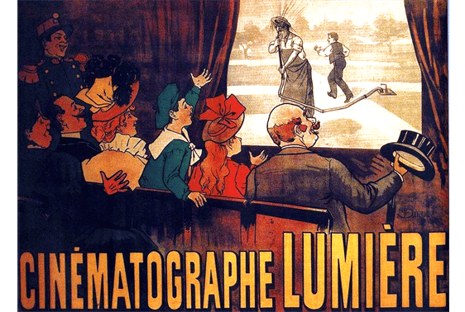
Early film poster for l’Arroseur Arrose screened by the Lumiere Brothers circa 1895. / Universal History Archive/UIG / Bridgeman Images
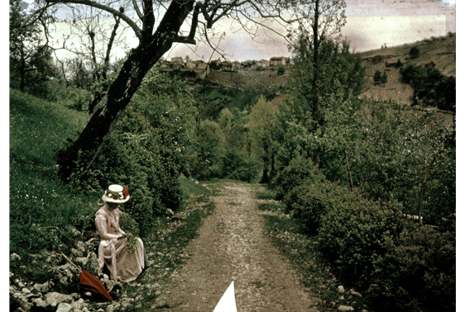
Young woman at the side of a country road c. 1900, autochrome by Lumiere brothers (color photo on glass, 1st color photography process invented in1903) / Tallandier / Bridgeman Images
Their first film, entitled Workers Leaving the Lumiere Factory was produced in 1895. It depicts a number of workers leaving the gates of the Lumiere factory after a working day. Several versions were produced, all with slightly different visuals – different numbers of horse-drawn carriages passing by, etc – and it is widely considered their first film; the first time they were able to bring their vision of publicly viewable films into reality.
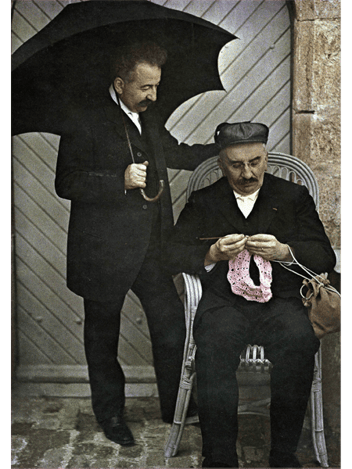
the brothers Louis and Auguste Lumiere, inventors of color photography and inventors of the cinema, Autochrome picture taken in 1906-1912 (color photo on glass, 1st color photography process invented in1903) / PVDE / Bridgeman Images
Though the Cinematograph is the invention for which the Lumiere brothers are best known, their passion was more deeply rooted in perfecting the still image – dismissing film as ‘novelty’. In 1896, the brothers toured 10 of their films around the world and by 1905, they had withdrawn from the film business. They went on to develop the first practical photographic colour process – the Lumière Autochrome. Colour images shown here are all examples of the autochrome process – versions of which were in use as late as the 1930’s.
By 1948, both brothers had passed away, but the influence their pioneering projects had on filmmaking formed the groundwork of today’s gigantic film industry.
Read More
Watch: Early Edison Films from the late 1800s and early 1900s
Creating Something from Nothing: Our Favorite Inventors
Philip de László Archive: hidden footage moments from the 20’s & 30’s
